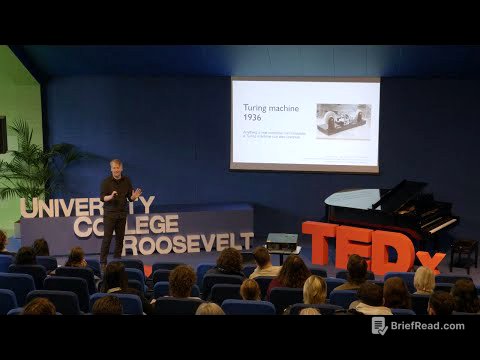TLDR;
The session covers Phylum Cnidaria (also known as Nidaria) and Phylum Ctenophora. For Cnidaria, the discussion includes their characteristics like habit, habitat, level of organisation, symmetry, body plan, germ layers, and coelom, along with a special focus on stinging cells (nematocysts). Examples of cnidarians like Hydra, jellyfish (Aurelia), Portuguese man of war (Physalia), sea fur (Obelia), sea pen (Pennatula), sea fan (Gorgonia), and corals are discussed. For Ctenophora, the lecture details their unique features such as comb plates for locomotion and bioluminescence. Examples include Pleurobrachia and Ctenoplana.
- Phylum Cnidaria: Characteristics, stinging cells, examples (Hydra, jellyfish, corals).
- Phylum Ctenophora: Comb plates, bioluminescence, examples (Pleurobrachia, Ctenoplana).
Introduction [0:08]
Dr. Anisha from Sri Chaitanya Educational Institutions welcomes students to a zoology session for the NEET bridge course 2025, aimed at preparing for the NEET 2027 exams. The session will cover the animal kingdom, specifically focusing on Phylum Cnidaria, Ctenophora, flatworms, and roundworms.
Phylum Cnidaria: General Characteristics [1:56]
Phylum Cnidaria, also known as Nidaria, includes organisms with specialised cells called cnidocytes. Key characteristics to remember for each phylum include habit, habitat, level of organisation, symmetry, body plan, germ layers, and coelom. Cnidarians can be motile or non-motile and are mostly carnivorous.
Habitat and Organisation [4:53]
Cnidarians are aquatic, found in both freshwater (like Hydra) and marine environments (like jellyfish). They exhibit tissue-level organisation, a step up from the cellular level seen in porifera.
Symmetry, Body Plan, and Germ Layers [7:40]
Cnidarians display radial symmetry, meaning they can be divided into equal halves along multiple planes. They have a blind sac body plan, featuring a single opening that serves as both mouth and anus. Cnidarians are diploblastic, consisting of two germ layers: ectoderm and endoderm, and are acoelomate, lacking a true body cavity.
Special Characteristic: Stinging Cells (Nematocysts) [12:57]
A defining feature of cnidarians is the presence of cnidocytes, which contain nematocysts or stinging cells. These cells are primarily located on the epidermis and tentacles and are used for defense, prey capture, and surface attachment.
Structure and Function of Stinging Cells [16:29]
Nematocysts contain a fluid-filled sac called a nematocyst, which holds a coiled thread tube ending in a sharp needle. This tube injects a toxin called hypnotoxin, which can paralyze or kill small organisms and cause severe pain in larger organisms, including humans. The nematocyst is triggered by a structure called a cnidocil.
Examples of Cnidaria [23:10]
Examples of cnidarians include Hydra, jellyfish (Aurelia), Portuguese man of war (Physalia), sea fur (Obelia), sea pen (Pennatula), sea fan (Gorgonia), and corals. Corals secrete calcium salts, forming coral reefs over long periods. The Great Barrier Reef in Australia and Lakshadweep in India are examples of coral reefs.
Phylum Ctenophora: Introduction and General Characteristics [26:47]
Phylum Ctenophora includes comb jellies or sea walnuts, characterised by comb plates. These organisms are motile or non-motile and have transparent bodies due to a thick, jelly-like mesoglea between the ectoderm and endoderm.
Habitat, Organisation, and Symmetry of Ctenophora [31:37]
Ctenophores are exclusively marine organisms. They exhibit tissue-level organisation and radial symmetry. Their body plan is a blind sac, with a single opening for both ingestion and egestion.
Germ Layers and Body Cavity of Ctenophora [35:25]
Ctenophores are diploblastic, consisting of ectoderm and endoderm, and are acoelomate, lacking a true body cavity.
Comb Plates: Structure and Function [38:26]
Ctenophores have eight longitudinal rows of comb plates, which are used for locomotion. These comb plates help in movement from one place to another.
Bioluminescence in Ctenophora [41:28]
Ctenophores exhibit bioluminescence, emitting light through chemical reactions, causing them to glow in the dark.
Examples of Ctenophora and Conclusion [43:36]
Examples of ctenophores include Ctenoplana and Pleurobrachia, commonly known as sea walnuts or sea gooseberries. The session concludes with a quick review, asking students for an example of a freshwater cnidarian (Hydra). The instructor encourages students to stay focused, study well, and maintain a healthy lifestyle.









